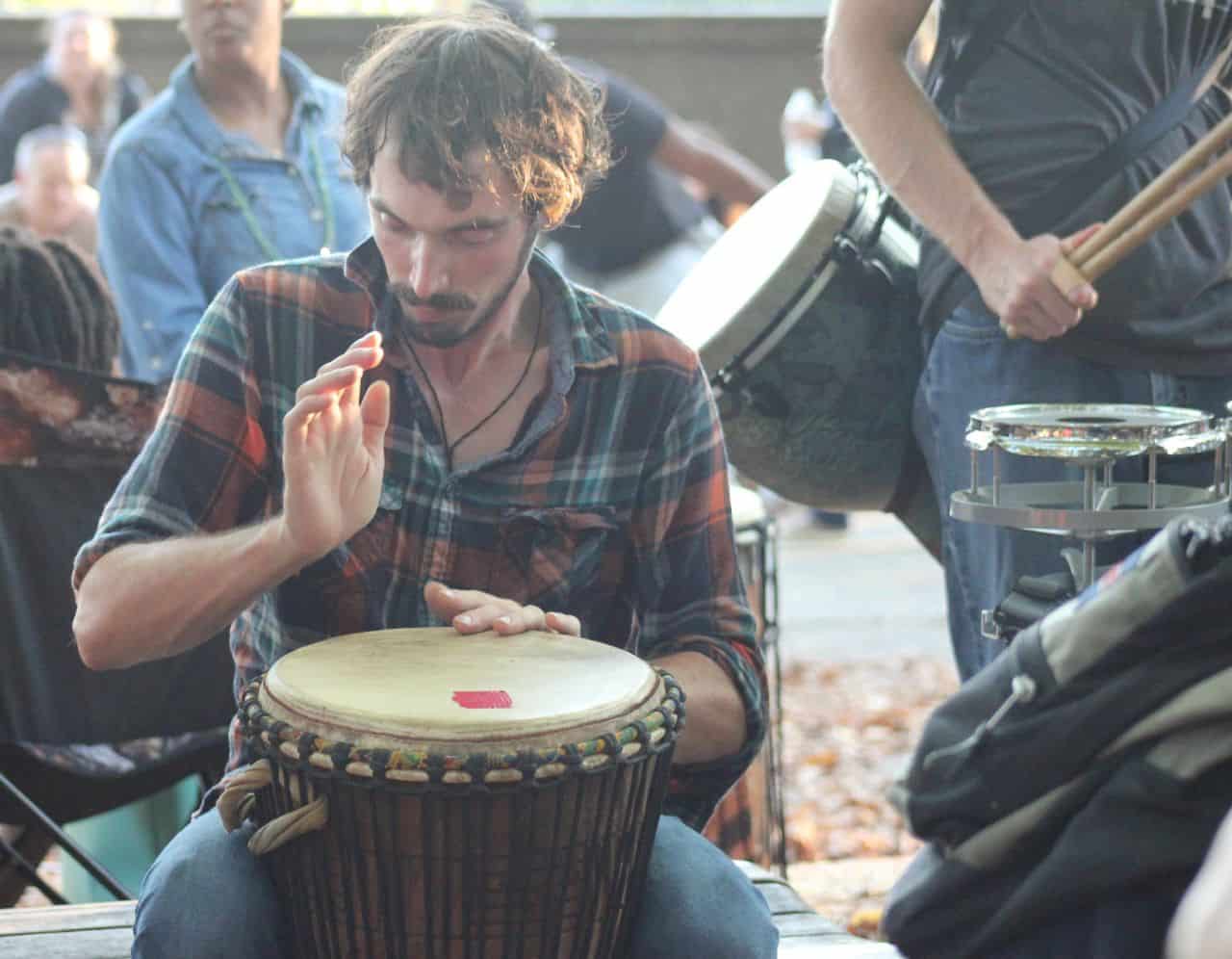The number of misconceptions that are associated with drum circles are huge. When you think of a drum circle, you may picture hackey-sack kicking teenagers in a park wasting time, talking about the importance of purified water and other conspiracy theories about how the government is trying to take over. Dispite these false impressions, drum circle therapy has been used for learning and team bonding exercise for decades. Never mind that the first ancient instruments were drums and thousands of years old!
Whether or not you are particularly interested in music, you’ve probably noticed that certain styles and rhythms make you feel more deeply than others; make you want to get up and dance. Certain styles like dancehall, electro-house, and Afro-Cuban jazz seem to draw particular movement styles out of people when they hit the dance floor, and if you’ve ever wondered about this there is a pretty clear answer: our pagan ancestors celebrated the earth with dancing and drums – it’s hardwired into our systems.
Because most folks don’t dance around a fire in a drum circle in celebration these days, and because there are no dance parties at church (for the most part), people seek out these rhythms at live concerts, festivals and nightclubs. In cities like Montreal and San Francisco, where people strive to maintain a strong life/ work balance, you’ll often find people congregated in huge drum circles at Mont Royal or Dolores Park on the weekends, dancing and shaking off the stress.
Because we are biologically wired to respond to rhythm by moving our bodies (put on a danceable pop song in a pre-school and watch what happens), we’ll often seek out clubs and concerts on the weekends, spending exorbitant amounts of money on cover, cabs and booze. There’s nothing wrong with a big night out, but trying drum circle therapy outside of a raucous nightclub may help you get your movement fix without breaking the bank and suffering through the hangover.
Tabla:
Tablas are hollowed out wood clay or brass hand drums that have a light, lovely tone that is easy on the ears. Tabla playing is typically found in Hindustani classical music and music that is popular in India, Pakistan and Nepal. Because of its pleasant timbre, tablas can often be heard in western pop music, and once you know what it’s called you’ll always recognize it.
Djembe:
Djembes are hand drums that originated in West Africa. They are very loud and versatile and can create a more bass heavy tone than the Tabla. In Mali, where the Djembe is very popular, it literally signals people to come together and dance. Movement and drumming share a symbiotic relationship.
Kit: A drum kit consists of a kick, snare, some cymbals and probably a couple toms. This is what you hear in almost any rock band, with more adventurous rock bands sometimes working with a drummer and a percussionist on hand drums. Learning to play the drum kit requires an immense amount of coordination and practice, so it’s best to seek out music lessons in your area if your area and work with a pro.
Because drum circles are associated with Dionysian hippie parties like Woodstock and Bonnaroo, people tend to steer clear of the whole concept. If you invest in a cheap hand drum and drum along to a YouTube video, however, you may unlock that primal feeling that helps to jettison your anxieties. There are movement and drumming groups that are a bit more organized than a hippie festival, just check your local meetups site and see what you can find!

